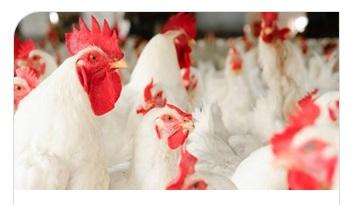The Power of Stabilized Enzymes in Poultry Feed
Published: March 10, 2020
By: Winston A. Samuels, Ph.D. Ceo at Maxx Performance.

Enzymes are one of the many types of protein in any biological system involved in anabolic and catabolic pathways of digestion and metabolism. They are essential in catalyzing the rate of a reaction, but are not themselves altered by the reaction, and tend to act on one or a limited number of compounds known as substrates.
Digestive enzymes are produced in every living organism, from the highest developed animals and plants to the simplest cellular forms of life, and are essential for metabolic purposes. These are categorized as endogenous (produced by the animal); however, they may also be exogenous (administered externally).
Enzyme cost: The largest single expense in any system of poultry production is feed cost, which can account for 70% of the total cost of production. Feeding enzymes to poultry is one of the major nutritional advances in the last fifty years. Feed industry experts have long known that the application of “best-generation” feed enzymes can be a potential solution to ever-increasing feed costs by optimizing the ingredients’ usage and unlocking hidden nutrients. Optimizing feed formulations will be the key to future success—allowing poultry nutritionists to formulate less-expensive diets and get the most out of each kg of feed.
Enzyme stability: When subjected to air, high humidity and elevated temperatures, enzymes become unstable and suffer potency loss. While pellets are the preferred method of poultry feed delivery, the pelleting process requires high temperature and steam, albeit for short periods of time, which most enzymes will not withstand. Other methods of applying enzymes to poultry feed have been found, but they are not ideal – typically involving overdosing of these expensive ingredients.
How microencapsulation can help: Maxx has collaborated with feed companies on using its microencapsulation technology to improve thermal stability of enzymes for use in pelleted poultry feeds; research shows a 94% recovery rate of microencapsulated thermal stable enzymes in pelleted feeds that are subjected to steam pelleting.
By coating the enzyme with food-grade matter, it survives passage through the gastrointestinal tract and releases at the site where it is most effective. Feed mills no longer have to overdose and by using a stabilized enzyme there is significant cost savings. Storage cost is also reduced because no longer is there a need for expensive packaging.
Related topics:
Authors:
Maxx Performance
Influencers who recommended :
Winston SamuelsRecommend
Comment
Share
Recommend
Reply
Recommend
Reply
23 de abril de 2020
Dear W. A. Samuels et al. ! There is an unclear division of concepts among researchers : microcapsules and microgranules. They have different purposes. When the shell breaks, the microcapsule immediately gives up the active substance. They microgranules of active substance is released gradually as the dissolution of the microgranules. It is very important not to forget about the size of microgranules (microcapsules) of the daily portion of feed should be 400 particles (microgranules), then they can be distributed over the feed as a result of mixing with CV =5%. What have you worked with and what size of microgranules (capsules)?
Recommend
Reply

Would you like to discuss another topic? Create a new post to engage with experts in the community.
Featured users in Poultry Industry

Shivaram Rao
Pilgrim´s
PhD Director Principal de Nutrición y Servicios Técnicos de Pilgrim’s Pride Corporation
United States
United States









